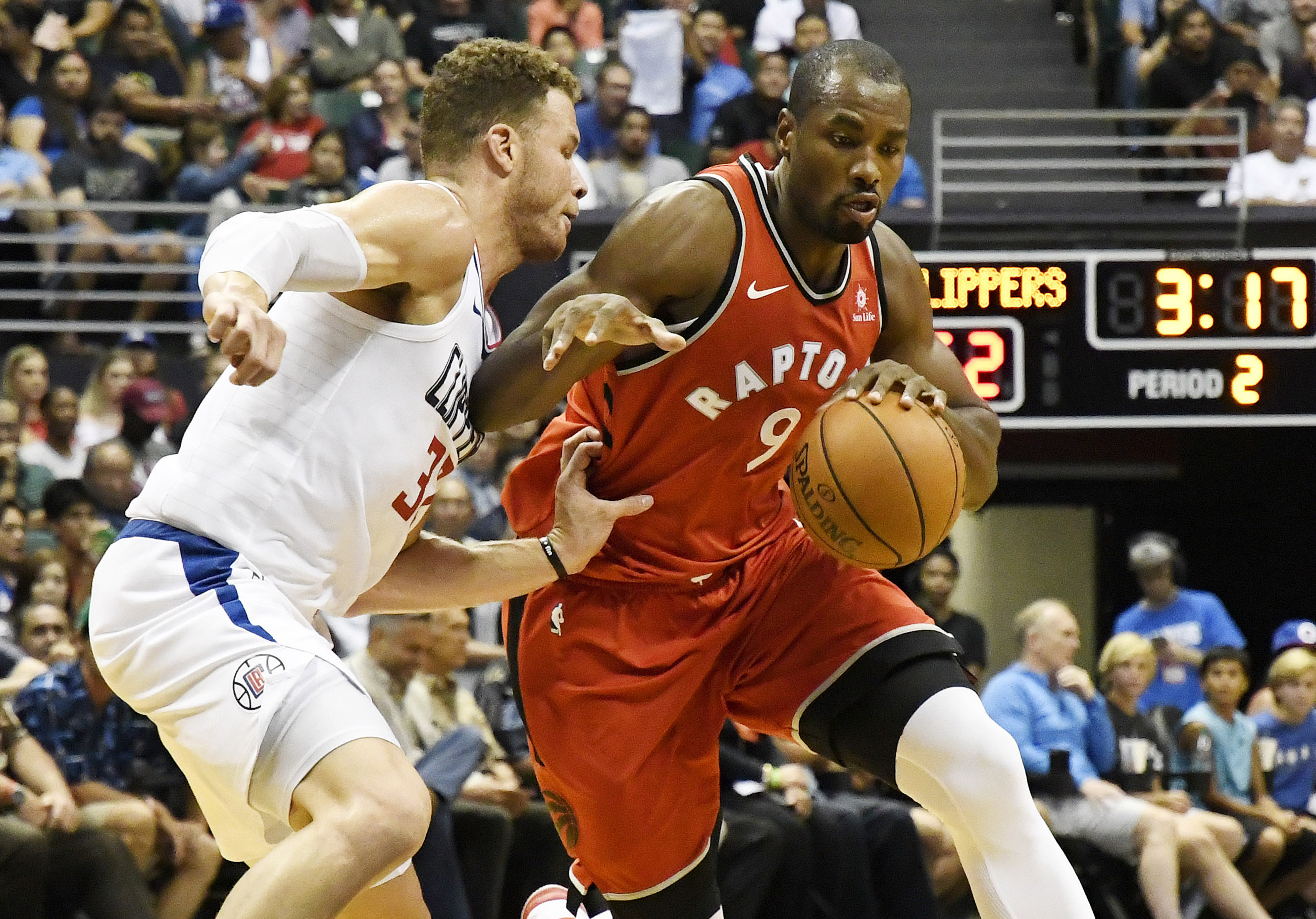The first ten games of the Toronto Raptors season has left us with more than enough storylines. The one that has jumped out the most, at least to me, has been the play of Serge Ibaka.
Acquired prior to last season’s trade deadline and resigned to a three-year $65 million deal in the offseason, Ibaka was thought of us a cure to the Raptors defensive ills. A capable defender in the pick and roll and an excellent rim protector, Ibaka was The Guy that Toronto was missing. Now, the problem is that guy is missing now too.
Ibaka remains a valuable player but the early season shows that he has a different kind of value now. To judge Ibaka’s success, I think we may need to shift our perception of Ibaka as a player.
His defence has waned, but the improvement in his three-point stroke over recent years has made him an important piece of the offence. Before diving into some of the numbers behind his change, two important notes: Ibaka’s health is a bit of a question mark after he had swelling in his right knee in late October. Also, none of what I’m saying is a veiled way of questioning the age of Ibaka. That rumour needs to stop.
Let’s start with shot-blocking. Ibaka’s down to a block percentage of 2.8%. At first blush, that isn’t a terrible mark. But Ibaka was at 4.2% last year, making it a considerable drop-off. What’s the reason for the change?
First and foremost, I’d say it is fair to question Ibaka’s effort level. I know, I know: this is the most surface-level take possible. But I’m far from the first person to make the observation. Ibaka’s game against Denver stands out, where Paul Millsap ate his lunch in the opening quarter. It started with a slow close-out on a wing three and spiralled into late three-point contests leading to fouls. These kinds of errors happen when you’re not engaged, or you have not really scouted your opponent.
Blocks can be a function of effort level because it takes effort to play good help defence and in turn, block shots. Players have to be paying attention to their responsibilities in help and combine that with great instincts to become a prolific shot blocker like Ibaka was in the early 2010s. I think that effort level has changed as his role as an offensive player grew.
I’m hesitant to solely chalk the change in shot blocking up to his loss in athleticism. It plays a part, but we’ve seen players remain strong shot blockers even when the hops dissolve. Effort factors into the equation, though assigning responsibility is going to be tough to figure out.
The changing landscape of the NBA crossed my mind as a reason for the change. Is Ibaka getting less blocks because more teams are taking more threes, therefore leaving fewer block opportunities? Teams were taking more threes against Toronto last year than this year, so it doesn’t look that way. There’s a lot of noise with this, and it could still be a factor if Ibaka has been guarding more three-point shooters at power forward. This would drag him from block scenarios, theoretically. I think that could be a factor, but not something I’m willing to put a lot of stock in.
Ibaka used to be a great offensive rebounder, but he has regressed in that area. His OREB% has been halved from last season, though we’ve got a pretty simple explanation for that. Just look at his three-point rate: Ibaka’s 3PAr is .534, meaning over half his shots are threes. It’s tough to crash the offensive glass when you’re parked behind the arc.
And it is that three-point shot that lies at the heart of the offensive change. As a part of the Raptors overhauled offensive philosophy, Serge has gotten the green light from three. That .534 mark ranks ahead of Kyle Lowry (.518) and J.J. Redick (.525) and not too far behind Steph Curry (.582). Ibaka’s only shooting 36.8%, but that is good enough to create space for others to operate in.
This means Toronto may have to evaluate and use Ibaka differently. His defensive strengths have been trending downwards since 2015 (in which he had a surgery on that right knee that swelled up earlier) but he’s grown offensively. Expecting Ibaka to return to his defensive prime is unrealistic, but there are options in-house, largely with the sophomore out of New Mexico State. Every minute Pascal Siakam makes it harder and harder to leave him on the bench. His defence is a different style compared to Ibaka; a switchy and fleet four man capable of corralling ball handlers and using his energy and length to make passes difficult.
Moving forward, Dwane Casey and his staff should explore ways to maximize Ibaka’s strengths and minimize his weaknesses through better rotations. More minutes won’t make Old Serge reappear and there are capable young players on the roster to do what he now lacks.
Don’t get it twisted: Ibaka is an important piece who, when healthy, elevates the ceiling of this team — just not in the way we thought when we acquired him.


